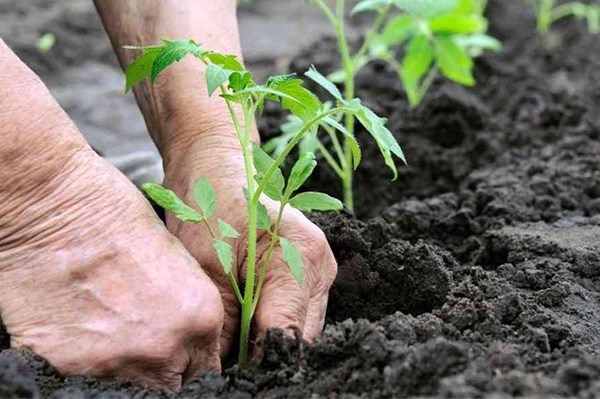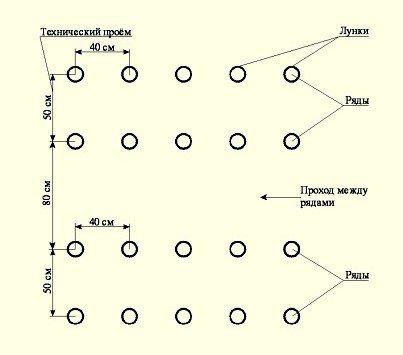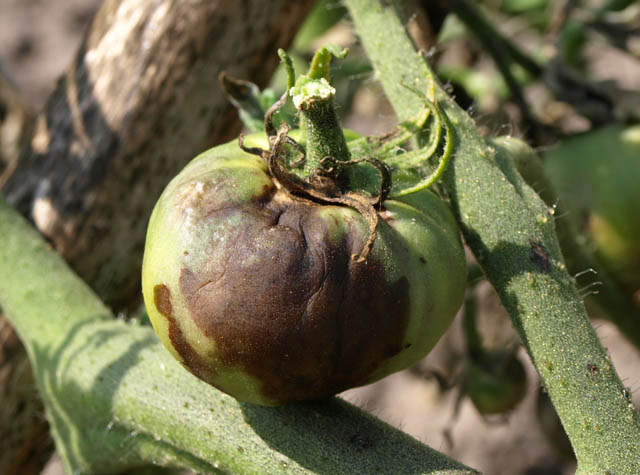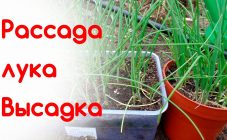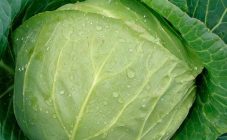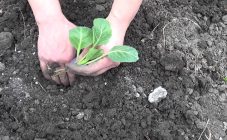Content:
Many gardeners are currently involved in the cultivation of tomatoes. Some, not having a garden plot, manage to grow and collect fruits on a windowsill or balcony. And this is not surprising, because self-grown tomatoes have a completely different taste, different from store-bought vegetables.
What are tomatoes good for?
In addition to the fact that tomatoes remain tasty in any form, they contain vitamins such as A, B2, K, etc. They also contain many important substances - magnesium, iron, zinc, iodine, fructose, glucose.
But it is lycopene that makes tomatoes really healthy. This antioxidant prevents cell mutations, which is the prevention of cancer, reduces the risk of heart disease. Lycopene is not produced by the body, so it is very important to get it from food. The highest concentration of lycopene is in tomatoes.
Sowing seeds for seedlings
In the spring, before sowing, the seeds are treated with a solution of potassium permanganate. For good germination, seeds are soaked in solutions such as "Ecosila", "Baikal EM-1", they are growth stimulants.
Then seeds are sown into moistened loose soil, lightly sprinkled with earth. The pot or container is left in a warm place until the first shoots.
Planting tomatoes in open ground
Most gardeners grow tomatoes as seedlings, first on a windowsill and then in a greenhouse or garden bed. When the seedlings reach the required size, it is time to plant it.
It is very important to wait for stable warm weather, without night frosts and temperature changes. Tomatoes are too sensitive to frost, if it is freezing outside, the seedlings may die or stop growing.
To avoid freezing of seedlings, gardeners build mini-greenhouses with a hinged or removable lid, use a covering material, a film.
The disembarkation time must be chosen depending on the region. If these are the southern regions, you can plant tomatoes in the ground at the beginning of May. In central Russia, for example, in the Moscow region, disembarkation is carried out from the end of May to the tenths of June. And in Siberia and the Urals - only at the beginning - mid-June.
It is believed that on the days when the moon is growing, it is good to carry out land work and seedlings will take root, and vice versa - when the moon is waning, it is not advised to tinker with the earth. However, following the lunar calendar does not guarantee a good harvest if you do not care for the tomatoes correctly.
How to prepare a place
Often a place for tomatoes has been prepared since autumn. The soil is dug up, removing weeds, fertilizing is applied. Someone uses rotted manure, and someone uses ready-made mineral mixtures (superphosphate, potassium sulfate).
Tomatoes do not like to grow for a long time in the same place, therefore it is advised to change the place of the garden approximately every 3 years.If you used to grow cucumbers, beets, carrots, turnips, peas on the garden bed - don't worry, the tomatoes will like it there.
The place must be open and sunny. It is undesirable to be in close proximity to a garden bed of a fence, fences, greenhouses, greenhouses, large trees and various shrubs. There should be no shadow on the tomatoes. If the garden plot is in a lowland, it is advised to make a high bed for the tomatoes - this way they will get more sunlight, and the risk of death from frost will be minimized.
Immediately before planting, they dig planting holes 15-30 cm deep. The holes should be watered abundantly - at least 1 liter of water should be poured into one hole, if the ground is very dry, then more. Many people put wood ash, crushed eggshells or some other fertilizer into the holes. You can fertilize tomatoes with ash in the middle of summer, when there is an active increase in the yield.
Pay attention to ash - it is a free and readily available form of organic natural fertilizer. Ash contains a lot of potassium and phosphorus, which are so fond of tomatoes and potatoes. It improves the composition of the chemical soil, saturates it with minerals. Ash is collected from blast furnaces over several months, stored in buckets or other containers in a barn or garage.
It is advised to stick a wooden peg of medium thickness into the prepared hole. This is necessary for tying tomatoes, because thin branches break under the weight of heavy fruits. Alternatively, tie up large fruits that grow close to the ground to avoid rotting. It is best to tie it up with thick twine or cloth, previously cut into thin strips.
How to prepare seedlings

So that the new conditions do not stress the plants, they should be prepared. 10-20 days before planting in the ground, the seedlings are taken out for a while on the balcony
So that the new conditions do not stress the plants, they should be prepared. 10-20 days before planting in the ground, the seedlings are taken out for a while on the balcony, in the yard - where it is not constantly located, where the air temperature is several degrees below room temperature. The seedlings should not be exposed to direct sunlight, the windows should be closed with curtains, and it is better to take the seedlings into the shade.
The first time it is impossible to leave plants for a long time in unusual conditions, hardening should occur gradually. First, let it be 1 hour, then add 30-60 minutes every day. After a few days, you can leave the seedlings to harden for the whole day until late in the evening, and always bring them home at night.
If the seedlings have gone up, and for a long time before transplanting, you need to cut off unnecessary leaves. Usually these are the lowest leaves and cotyledons.
Planting technology

Pour a little water into the pots with seedlings, wait until they are absorbed and only then transplant
When the hole is ready, you can plant seedlings. Pour some water into the pots with seedlings, wait until they are absorbed and only then transplant. This is to avoid damaging the roots when the plants are removed from the pots.
The seedlings can now be removed. You should lightly knock on the box or pot in which the plant sits, tilt the container slightly and gently take out the seedlings, holding it by the roots with your hand. You need to try to take the plant along with the earth.
The plant is lowered into the hole, with one hand they hold the stem near the base, with the other hand they cover the hole with earth. Next, you should gently tamp the ground near the stem, but do not press too much.After these steps, you can water the tomatoes with a little water. If the ground is moist enough, you can do without it.
Overgrown plants can also be planted horizontally. Then, for such a plant, they dig another hole, not vertical, but at an angle of about 30 degrees. The top must be directed to the north, so that later the plant will independently rise to the sun. This method of planting does not harm the plant at all, but on the contrary contributes to the formation of a powerful root system. The stems of such a plant will be thicker and the leaves will be larger.
After all the above actions, a small depression is formed around each plant with their hands, in which water will collect during watering. This will improve watering quality.
Landing scheme
Since tomatoes love the sun, they do not need to be planted close to each other. Subsequently, when the plants are actively growing, their branches and leaves will shade each other.
And yet, there are different norms for different varieties of tomatoes. So, for low-growing species, it is advised to leave the distance between plants at least 30-40 cm, and between rows - 50-60 cm.High varieties need more land, so the distance between plants should be at least 50 cm, and between rows - 70-80 cm.
But what about those whose area does not allow planting tomatoes according to the rules? Other schemes can be applied!
- Scheme in a row. Tomatoes are planted in one or more rows, while maintaining the same distance, both between plants and between rows;
- Chess scheme. Everything is simple here - seedlings are planted in a checkerboard pattern in several rows. The distance between plants and rows is determined directly by gardeners, but it is advised to leave at least 40 cm;
- The scheme is tape. This layout is ideal for small areas. Tomatoes are planted in parallel rows. The distance between plants in a row is about 40 cm, and between rows is 20-40 cm.
Diseases and pests
Already at such an early date, tomatoes may have problems associated with pests and diseases.
Pests may appear due to the fact that the lower leaves were not removed from the pot into the ground when planting seedlings. Being in the soil, they attract various pests. You need to fight them with the help of special solutions against pests, which are poured out under the root of the plant.
The lack of certain elements and substances at the stage of seedling growth can cause a disease such as late blight. Diseased plants should be removed and burned.
Improper care or not too favorable conditions (temperature regime, humidity level) cause diseases such as black leg, brown and black spot. Diseased plants should be destroyed.
Viral and fungal infections also affect tomatoes, these are white spot, streak, mosaic. Affected plants should be removed as soon as possible, and the rest should be treated with a special solution.
After all the information stated above, it becomes clear when to plant tomatoes in open ground. Using it, you can expect high-quality seedlings and, subsequently, a good harvest.

